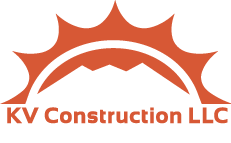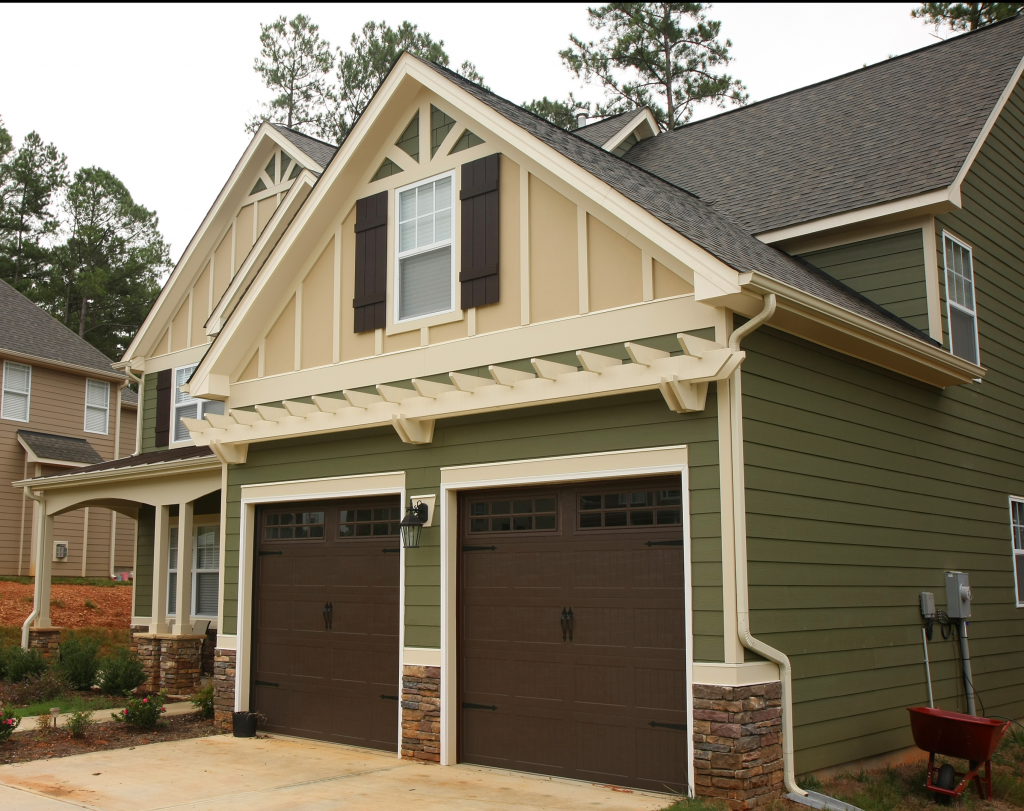Ready for a home improvement project that not only increases curb appeal but also saves you money? Look no further than learning how to install Hardie Plank siding! This do-it-yourself guide will walk you through the process step by step, from understanding the benefits of this durable material to maintaining its appearance for years to come.
Short Summary
Hardie Plank siding is a high-quality and resilient material known for its strength in extreme weather conditions.
Installation requires preparation, safety precautions, tools & materials, as well as step by step instructions on marking/measuring, cutting & nailing the siding.
Regular maintenance such as cleaning and repainting should be done to ensure optimal performance of Hardie Plank Siding over time.
Understanding Hardie Plank Siding

James Hardie is a leading brand specializing in premium fiber cement building products, which have become a popular choice for homeowners looking for a durable and visually appealing option. With the potential to save thousands of dollars on labor costs, a DIY Hardie Plank siding installation is an attractive project that provides your family the protection and peace of mind they deserve from the elements. By choosing James Hardie Pros for your siding installation, you can ensure a high-quality result that will last for years to come.
Hardie Plank siding, also known as hardie board, is designed to withstand extreme weather conditions, from heavy rain.
What is Hardie Plank siding?
Hardie Plank siding is a renowned, durable material composed of a mixture of sand, cement, and cellulose fibers. Its durability and resistance to extreme weather conditions, along with its fire-resistant qualities, make it an ideal choice for protecting your home for decades to come.
Advantages of Hardie Plank siding
Among the many benefits of Hardie Plank siding is its resistance to pests, such as termites, which can wreak havoc on wood-based siding materials. With an expected lifespan of at least 50 years, this siding material is not only durable but also aesthetically pleasing.
Prefinished Hardie Plank siding products offer added durability, with certain finishes backed by a 15-year warranty. As a result, you can expect your home’s exterior to maintain its appearance for years to come, making your investment both practical and visually appealing.
Preparing for Installation

Before diving into the installation process, it’s crucial to inspect and repair any damage to your wall sheathing. Once completed, secure building paper to the wall sheathing with staples and mark the stud locations on the soffit and foundation with a pencil.
This will serve as a guide during the installation process, ensuring your siding is accurately placed and securely fastened.
Safety precautions
While fiber cement siding is a reliable material, it’s essential to handle it with care and take necessary safety precautions. Always wear safety glasses, gloves, and a dust mask when working with this material, especially during cutting processes. Additionally, using felt paper as a barrier between the siding and the wall sheathing can help protect your home from moisture damage.
Adhering to these safety measures will help protect you from potential hazards, such as silica dust.
Tools and materials
To ensure a smooth and efficient installation process, gather essential tools and materials beforehand. 1. There are several tools necessary for siding projects: siding gauges, a fiber cement circular saw blade, a siding nailer and a 15-gauge trim nailer.
Each of these tools are integral for efficient and reliable siding jobs..
Having the appropriate equipment and services at hand will save you time and effort, allowing you to focus on the task at hand and measure your progress effectively. Don’t hesitate to visit a reliable service provider to ensure you have everything you need.
Step-by-Step Guide to Installing Hardie Plank Siding

To begin the installation process, follow these detailed steps: marking and measuring the siding courses, cutting the Hardie Plank siding, nailing and attaching the siding, and sealing gaps and joints.
By adhering to these guidelines and ensuring accuracy throughout the process, you’ll be well on your way to a successful Hardie Plank siding installation.
Marking and measuring
Start by marking the spots for the siding courses using a story pole, a straight 12-foot piece that helps ensure your siding courses are installed in a straight and uniform manner on horizontal surfaces. After marking the stud locations, snap chalk lines to guide nailing and the placement of siding joints.
Remember to provide a 1/8-inch clearance where the siding meets the window trim and sill.
Cutting Hardie Plank siding
When cutting Hardie Plank siding, use a carbide-tipped scoring knife or utility knife to score the surface of the siding, followed by snapping it along the scored line. Alternatively, a circular saw with a blade specifically designed for cutting fiber cement can be used for better results.
Handheld shears or snippers, similar to drill-powered tin snips, are also a popular method for cutting fiber cement siding. Don’t forget to wear appropriate protective gear, such as safety glasses, gloves, and a dust mask.
Nailing and attaching siding
Proper nailing techniques are essential for a successful installation. Use stainless steel or hot-dipped galvanized nails and nail at the top of the board, holding the nails 1 inch below the top edge. Maintain a 1/8-inch gap between boards and stagger the butt joints so they do not overlap.
Sealing gaps and joints
Caulking and sealing between corner trim and siding, as well as butt joints, is essential for a professional finish. Use a paintable caulk to seal any gaps or joints in the siding.
Polyurethane caulk or non-hardening electrician’s putty is recommended for sealing pipes, electrical entries, and similar fixtures.
Finishing Touches

After the installation process is complete, including the application of house wrap, it’s time to focus on the finishing touches that will give your home a polished and professional look. This includes painting the siding and installing trim and accessories, such as corner boards, window and door trim, and decorative accents.
These finishing touches can make a huge difference in the overall look of your home, as they can add important details to your design.
Painting Hardie Plank siding
To paint Hardie Plank siding, start by cleaning the siding thoroughly with a mild bleach and water solution. Next, prepare the area and apply caulk as needed.
Select a high-quality latex primer and apply it to the surface, followed by two coats of 100% acrylic latex exterior paint. This will ensure your siding maintains its color and appearance for years to come.
Installing trim and accessories
Complete your Hardie Plank siding installation by adding trim and accessories, such as corner boards, window and door trim, and decorative accents. These finishing touches will not only enhance the appearance of your home, but also provide additional protection against the elements, ensuring your investment in fiber cement siding is both practical and visually appealing.
Troubleshooting Common Installation Issues

Despite careful planning and execution, common installation issues may arise during the process. Understanding the causes of these problems and their solutions will help you address them effectively and ensure the longevity of your Hardie Plank siding.
Troubleshooting installation issues can be a daunting task, but with the right knowledge.
Cracking and damage
Cracking and damage in Hardie Plank siding can result from a variety of factors, such as over nailing, moisture damage, and extreme temperature fluctuations. To repair cracks, clean the affected area and apply a flexible sealant.
Regular inspection and maintenance can help prevent future damage and ensure the siding’s durability.
Moisture management
Preventing moisture-related issues in fiber cement siding is crucial for maintaining its performance and appearance. Clean the exterior surfaces every 6 to 12 months using a garden hose to remove dirt and debris. Also, conduct regular inspections for any signs of damage or moisture penetration.
Adhering to manufacturer’s guidelines and best practices for installation and maintenance will help you effectively manage moisture and protect your investment.
Maintenance and Care

Proper maintenance and care of your Hardie Plank siding are essential for preserving its appearance and functionality. Regular cleaning, repainting, and inspection will help ensure your home’s exterior remains beautiful and protected for years to come.
Taking the time to properly care for your siding will help you avoid costly repairs and replacements.
Cleaning Hardie Plank siding
To clean Hardie Plank siding, use a low-pressure washer and a soft brush to gently remove dirt and debris. Avoid using high-pressure water spray as it can damage the siding.
Regular cleaning will not only maintain the appearance of your siding, but also help prevent damage caused by the buildup of dirt and debris.
Repainting and maintenance schedule
Repainting Hardie Plank siding every 10-15 years will help maintain its color and appearance. Before repainting, clean the siding and apply a high-quality latex primer, followed by two coats of 100% acrylic latex exterior paint.
Adhering to a regular maintenance schedule will ensure your siding remains in top condition, providing protection and appeal for years to come.
Summary
In conclusion, installing Hardie Plank siding not only enhances your home’s curb appeal, but also provides long-lasting protection against the elements. By following this step-by-step guide and adhering to proper maintenance and care practices, you can save money and enjoy the benefits of a beautiful, durable home exterior for years to come.
Frequently Asked Questions
Do you nail or screw Hardie board?
For best results, it is recommended to use screws designed for cement-based products when nailing Hardie board. Pilot holes should also be drilled to ensure screws do not strip the hole in the Hardie board.
What is the proper nailing of Hardie board?
For optimal results when installing Hardie board, James Hardie recommends using quality, hot-dipped galvanized nails or stainless steel fasteners for corrosion resistance. The siding should be face nailed at the bottom and blind nailed at the top for best results.
Is HardiePlank easy to install?
HardiePlank is easy to install, as it has an A2 fire rating and is lightweight, with the GeckoGauge tool enabling one-person installation.
This makes it a great choice for DIYers and professionals alike, as it can be installed quickly and easily. It also has a long lifespan, with a 50-year warranty, so you can be sure it will last for years to come.
What is the lifespan of Hardie Plank siding?
Hardie Plank siding is a durable product that has an expected lifespan of at least 50 years.
What safety precautions should be taken when working with fiber cement siding?
When working with fiber cement siding, safety glasses, gloves, and a dust mask should always be worn for protection.

